Abstract
Calf thyroid tissue cultures were found to be the most sensitive system in detecting virus collected in a large volume air sampler from boxes, where cattle, sheep and pigs infected with A and C strains of foot-and-mouth disease (FMD) virus were housed. It was confirmed with all strains of FMD virus tested that pigs excreted the most virus followed by cattle and sheep, but there was variation between strains, the highest virus recoveries being obtained from animals infected with O1 and C Noville viruses. The results are discussed in relation to outbreaks of foot-and-mouth disease in Great Britain since 1954.
Full text
PDF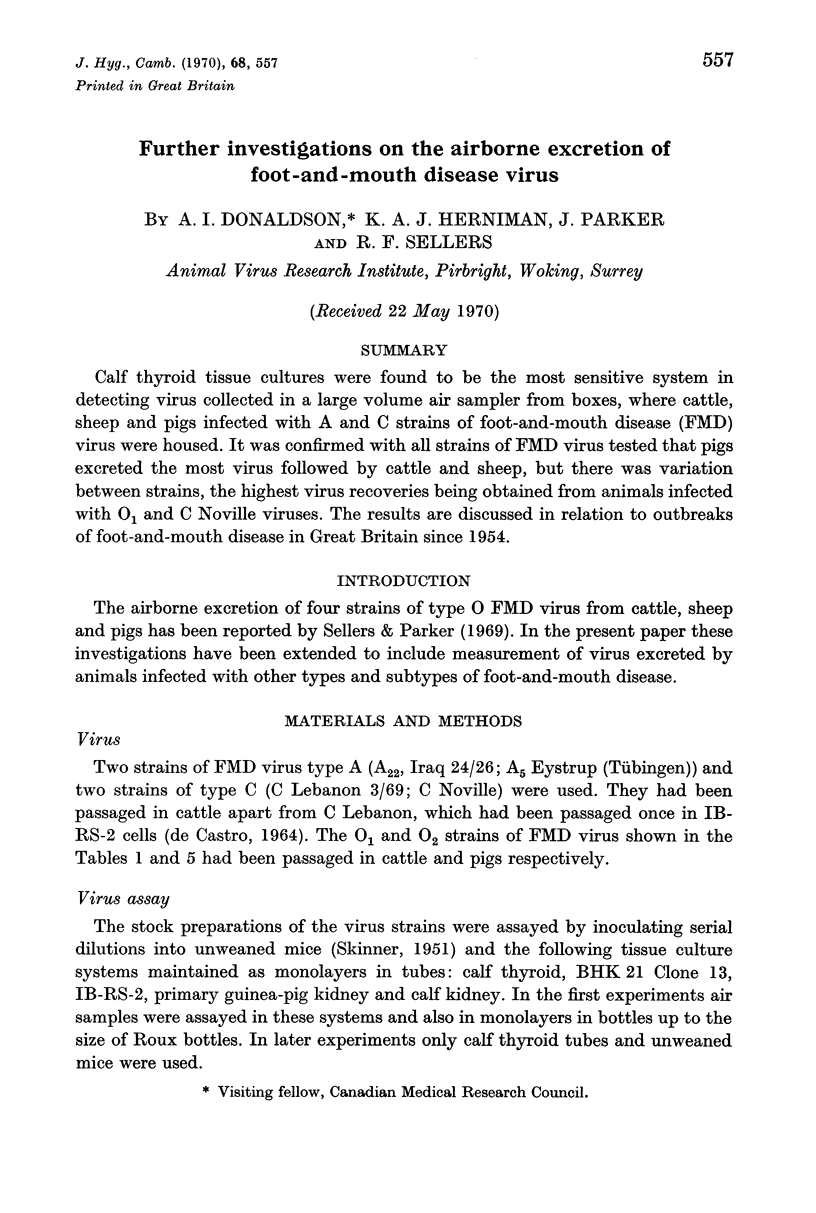

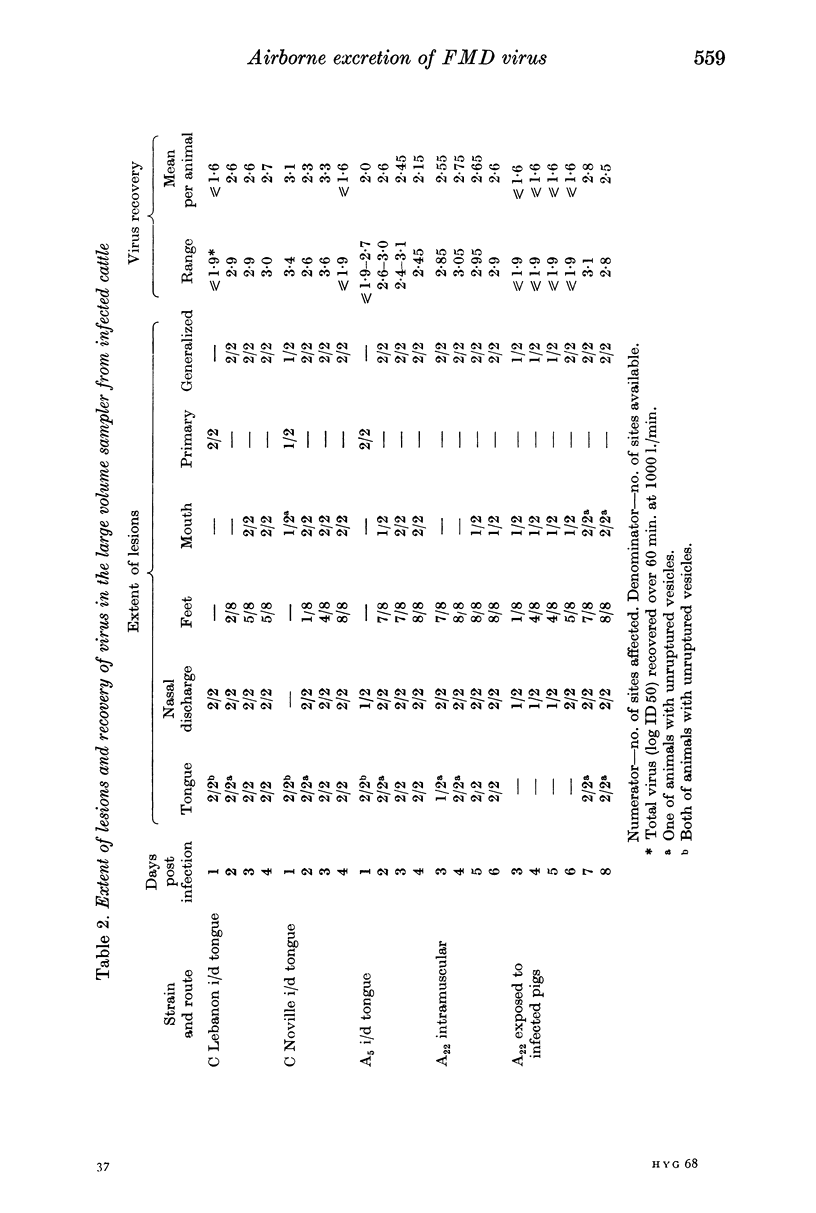
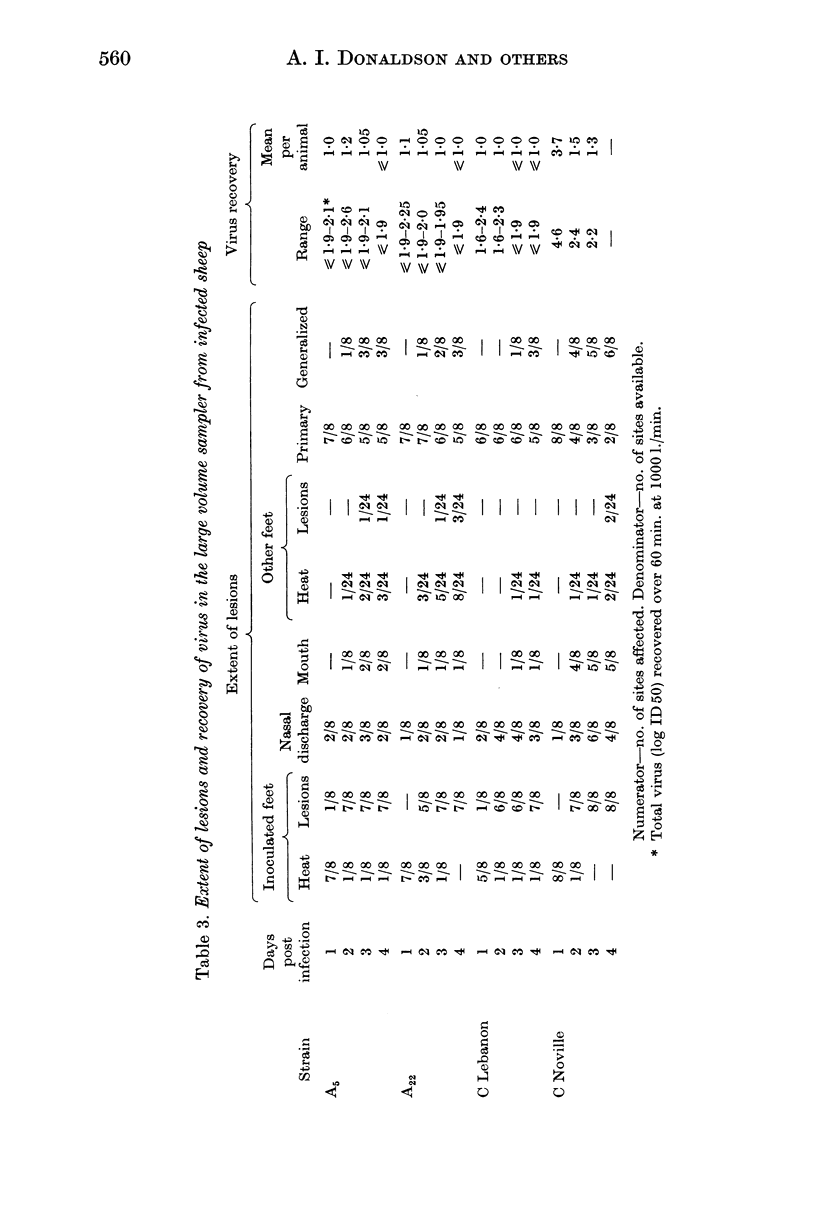
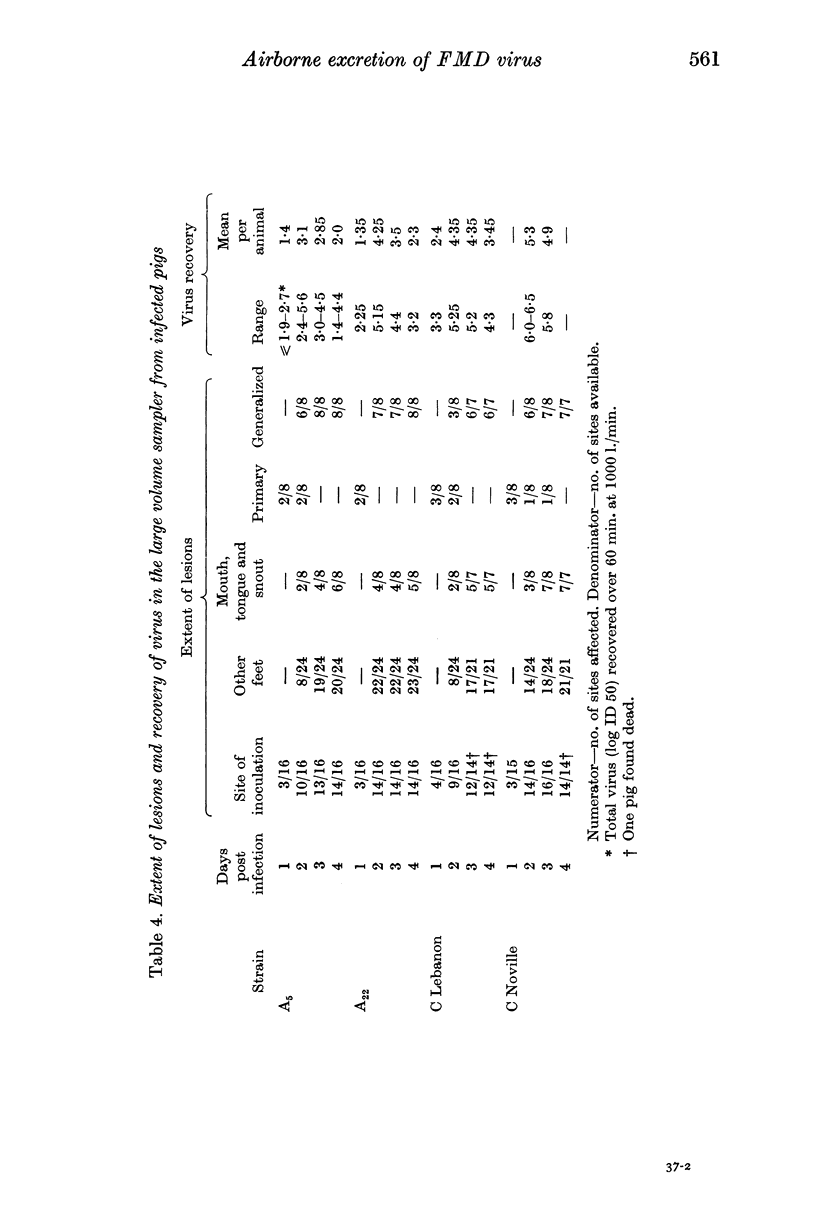
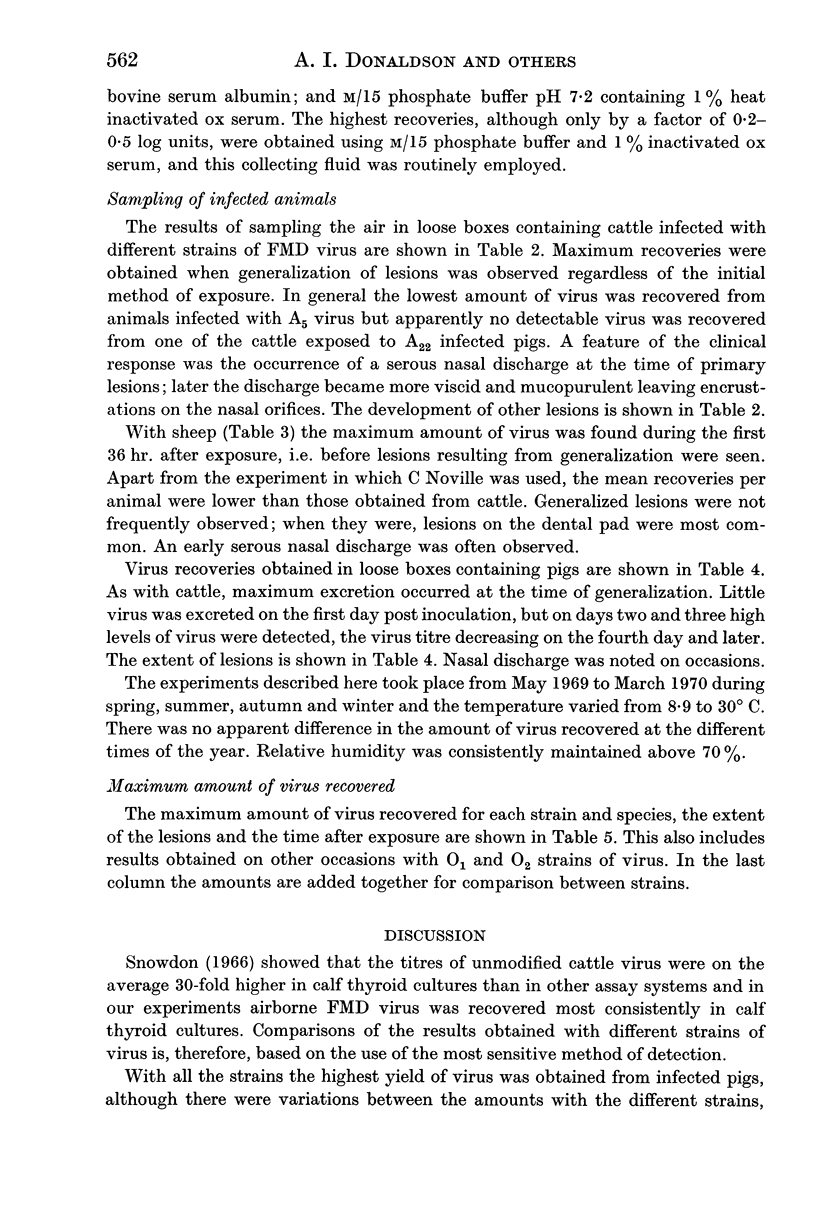
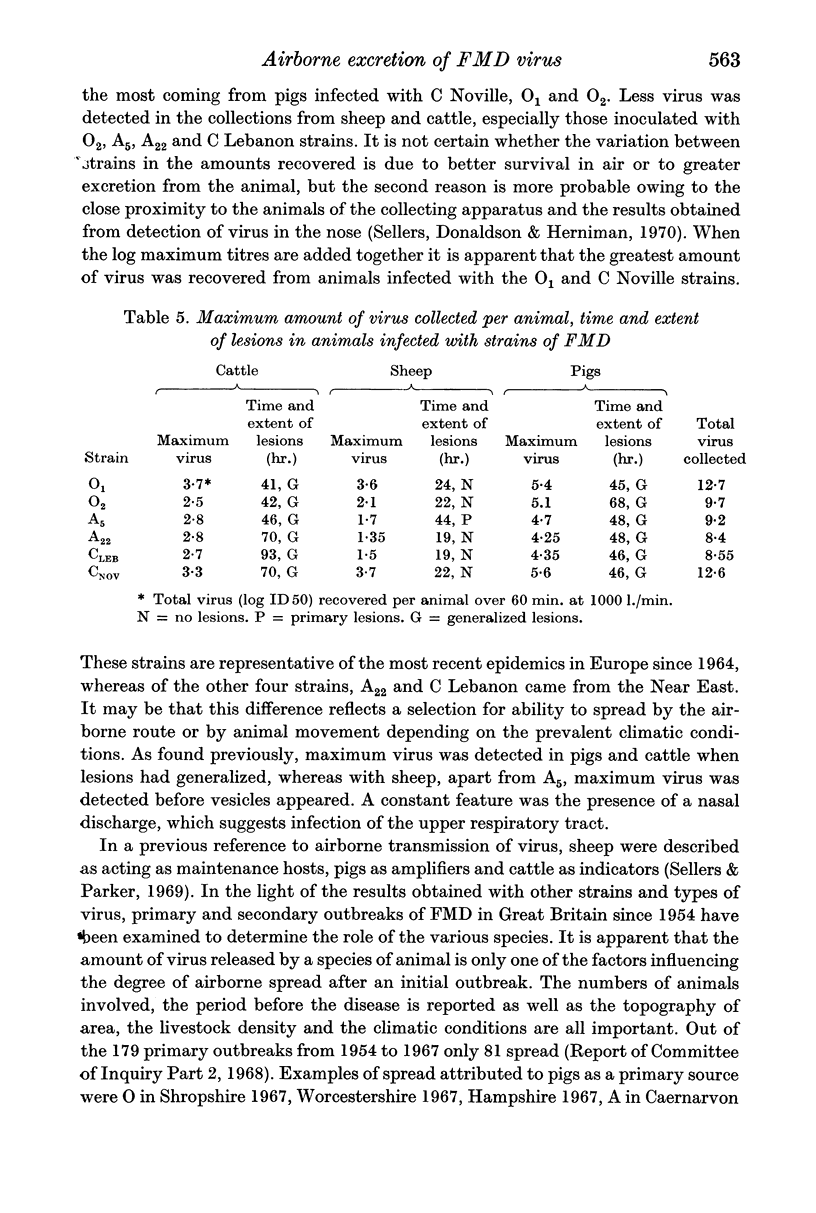
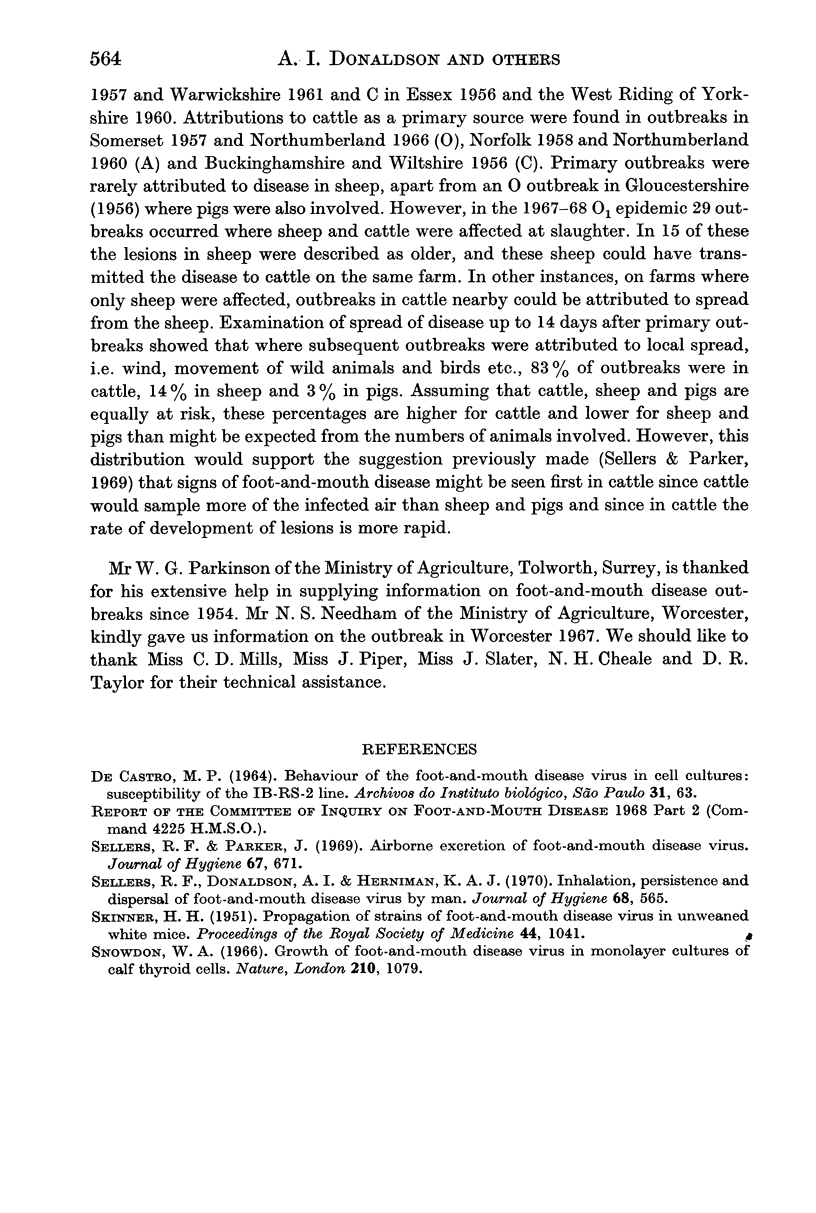
Selected References
These references are in PubMed. This may not be the complete list of references from this article.
- SKINNER H. H. Propagation of strains of foot-and-mouth disease virus in unweaned white mice. Proc R Soc Med. 1951 Dec;44(12):1041–1044. [PMC free article] [PubMed] [Google Scholar]
- Sellers R. F., Donaldson A. I., Herniman K. A. Ihalation, persistence and dispersal f foot-and-mouth disease virus by man. J Hyg (Lond) 1970 Dec;68(4):565–573. doi: 10.1017/s0022172400042492. [DOI] [PMC free article] [PubMed] [Google Scholar]
- Sellers R. F., Parker J. Airborne excretion of foot-and-mouth disease virus. J Hyg (Lond) 1969 Dec;67(4):671–677. doi: 10.1017/s0022172400042121. [DOI] [PMC free article] [PubMed] [Google Scholar]
- Snowdon W. A. Growth of foot-and mouth disease virus in monolayer cultures of calf thyroid cells. Nature. 1966 Jun 4;210(5040):1079–1080. doi: 10.1038/2101079a0. [DOI] [PubMed] [Google Scholar]


